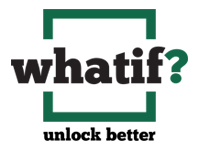
“Breaking Free from Limiting Beliefs”
Leaders may become trapped in a cycle of self-doubt, unable to make decisive actions or inspire their teams effectively. The consequences can be far-reaching, affecting team morale, innovation, and overall organizational success.
Welcome to this week’s Whatif? Wednesday Thought Letter, where we delve into a topic that might hold you back: limiting beliefs. If imposter syndrome is the feeling we’re not worthy, and negative self-talk is the voice telling us why, limiting beliefs are the invisible chains we place on ourselves in crucial moments. They can hinder our personal and professional growth, preventing us from reaching our full potential.
Understanding Limiting Beliefs
Limiting beliefs are our deeply rooted convictions about ourselves and the world. They’re like ‘invisible fences’ that can shrink our world and control our actions, often without our conscious knowledge. Limiting beliefs are not just random thoughts; they’re the product of our life experiences, moulded by family, culture, education, and significant events. For instance, a child constantly told they are not good at math might believe they cannot excel in quantitative subjects, limiting their career choices and self-confidence in related areas. We all have our versions of these beliefs; understanding them is the first step towards overcoming them.
The Roots of Limiting Beliefs
To effectively address limiting beliefs, we must first understand their roots. These beliefs often originate from early childhood experiences and are reinforced through socialization and repeated encounters. Negative feedback from parents, teachers, or peers can leave lasting imprints, shaping our self-perception and expectations as they shape what we deem possible or acceptable.
For example, gender stereotypes can instill limiting beliefs in both men and women, affecting their career aspirations and behaviours. A woman who sees predominantly male leadership roles in her organization may hesitate to pursue executive positions despite her qualifications and abilities. Similarly, a man who believes that showing vulnerability is a sign of weakness may struggle to build authentic relationships and seek support when needed.
The Impact on Personal and Professional Growth
Limiting beliefs have a profound impact on both personal and professional growth, but they are not insurmountable. They create mental barriers that prevent us from pursuing opportunities, taking risks, and achieving our goals. For example, one professional I know believes they are not a good public speaker and avoids opportunities to present, even though this leader is articulate, projects gravitas, and has valuable insights to share. This self-imposed constraint can hinder career advancement and diminish their influence within the organization. However, recognizing and challenging these beliefs can unlock our full potential and achieve our desired success.
Limiting beliefs can also erode self-esteem and foster a fear of failure. Leaders may become trapped in a cycle of self-doubt, unable to make decisive actions or inspire their teams effectively. The consequences can be far-reaching, affecting team morale, innovation, and overall organizational success.
Overcoming Limiting Beliefs
Breaking free from limiting beliefs requires a deliberate and multifaceted approach. Here are some strategies to overcome these self-imposed constraints:
- Awareness and Identification: The first step is to become aware of and identify your limiting beliefs. Reflect on situations where you felt held back or avoided acting. Ask yourself what beliefs were at play and where they might have originated.
- Apply the three Rs—Recognize, Reframe, and Replace: Once you have identified a limiting belief, challenge its validity. Ask yourself whether there is concrete evidence to support it or if it is based on assumptions and past experiences. Reframe the belief into a positive, empowering statement. For example, instead of believing “I am not good at public speaking,” reframe it as, “I have valuable insights to share, and I can improve my public speaking skills with practice.”
- Visualization and Affirmation: Visualization is a powerful tool for overcoming limiting beliefs. Visualize yourself succeeding in situations where you previously felt constrained. Pair this with positive affirmations to reinforce new, empowering beliefs. For instance, affirm to yourself, “I am confident and capable in my abilities.” Athletes, guided by coaches, work hard at visualization and affirmations.
- Seek Support and Mentorship: Engage with mentors, coaches, or supportive peers who can provide encouragement and constructive feedback. They can offer different perspectives and help you see beyond your limiting beliefs.
- Continuous Learning and Growth: Commit to lifelong learning and personal development. Embrace challenges as opportunities for growth rather than threats. This mindset shift can gradually erode limiting beliefs and expand your horizons.
Conclusion
Limiting beliefs are powerful saboteurs that constrain our potential and stifle growth. Recognizing and challenging these beliefs can unlock new possibilities and help us achieve our true potential. Overcoming limiting beliefs is an ongoing journey requiring patience, self-compassion, and persistence. As we explore and address these barriers, we pave the way for a more fulfilling and successful career and life.
In the next edition of the Whatif? Wednesday Thought Letter, we will delve into practical strategies to sustain the momentum of overcoming the three career saboteurs and how to foster a growth-oriented mindset. Stay tuned and continue to challenge the stories you tell yourself.
Stay curious.


Leave a Reply